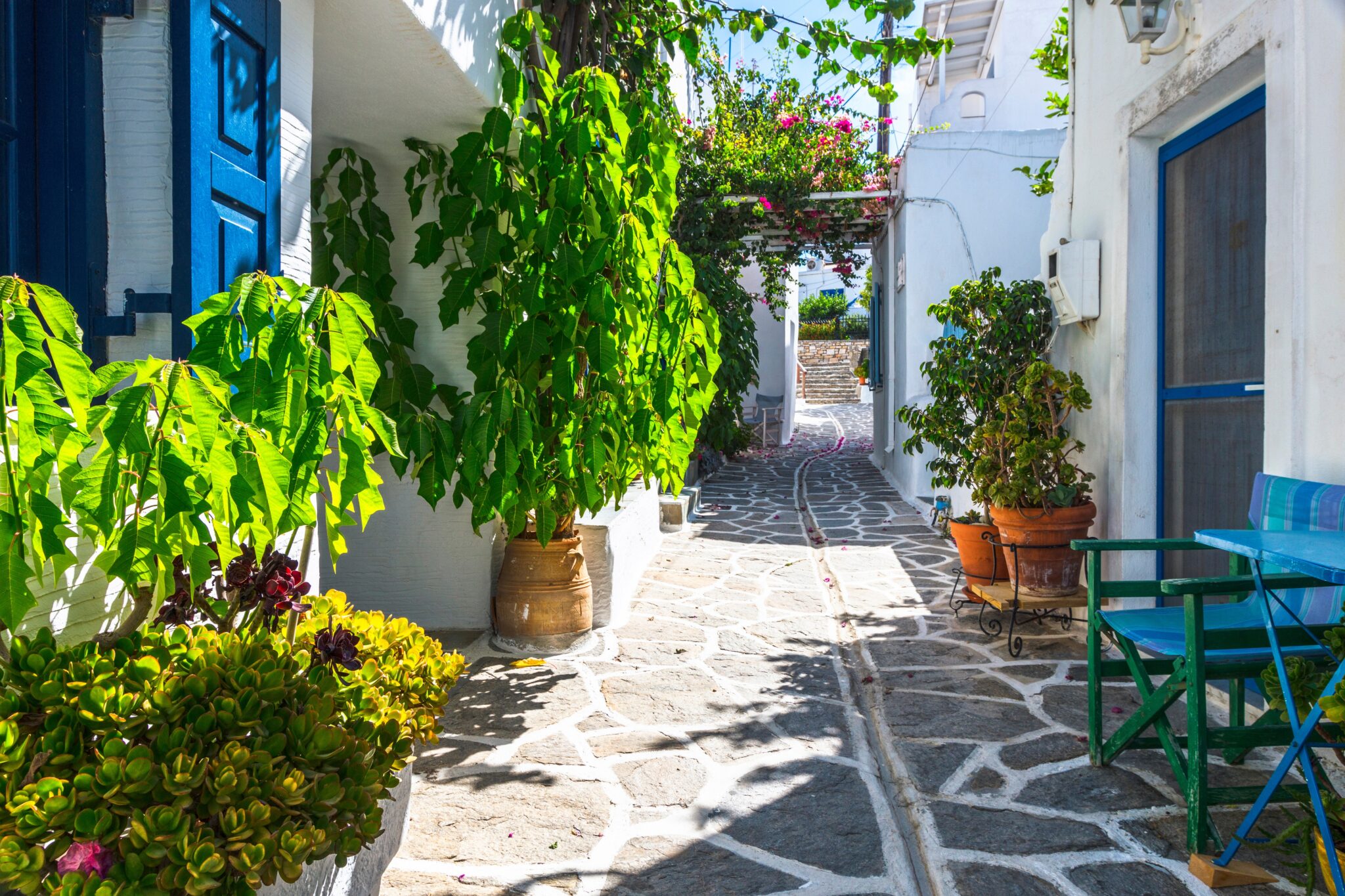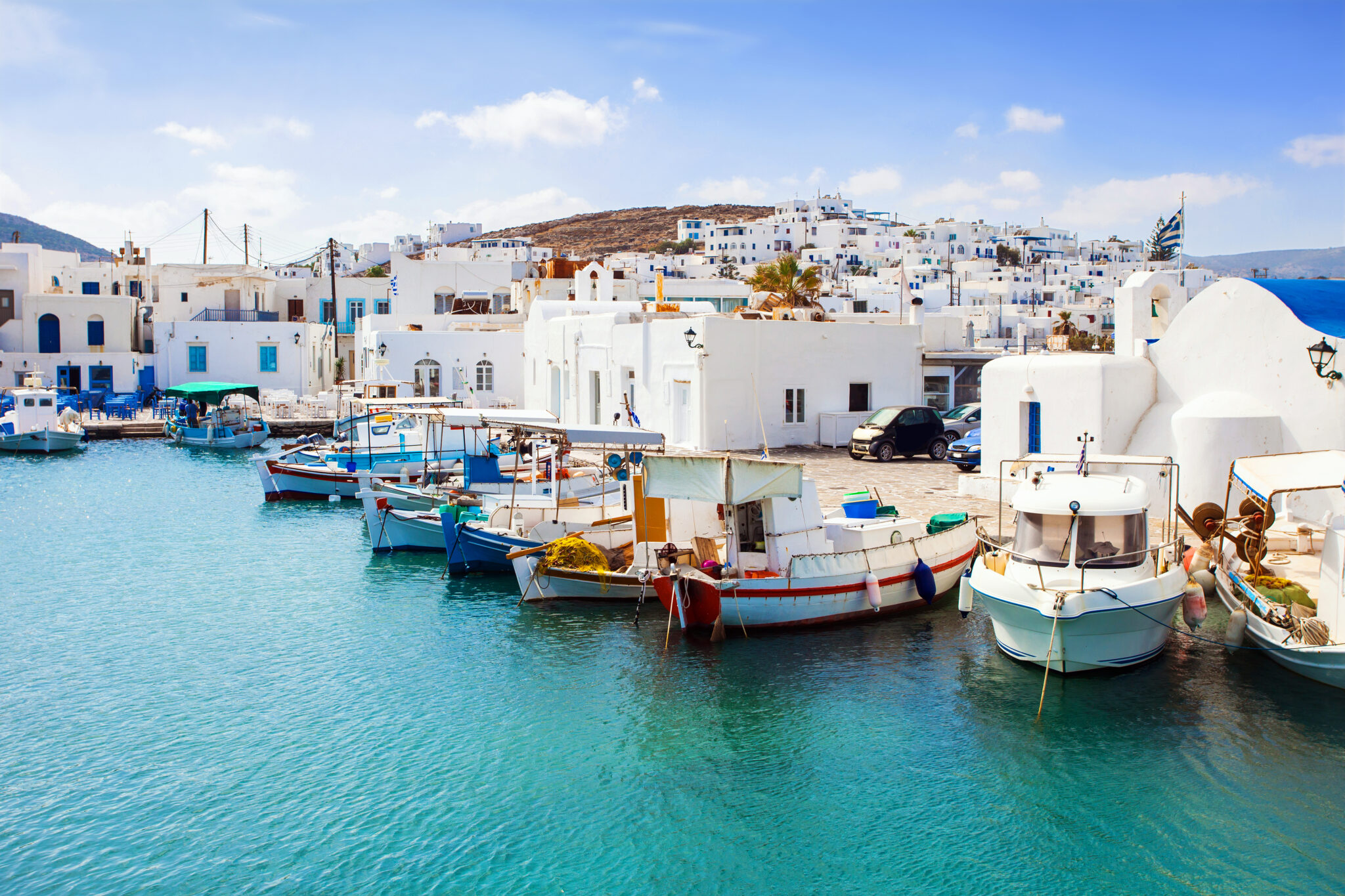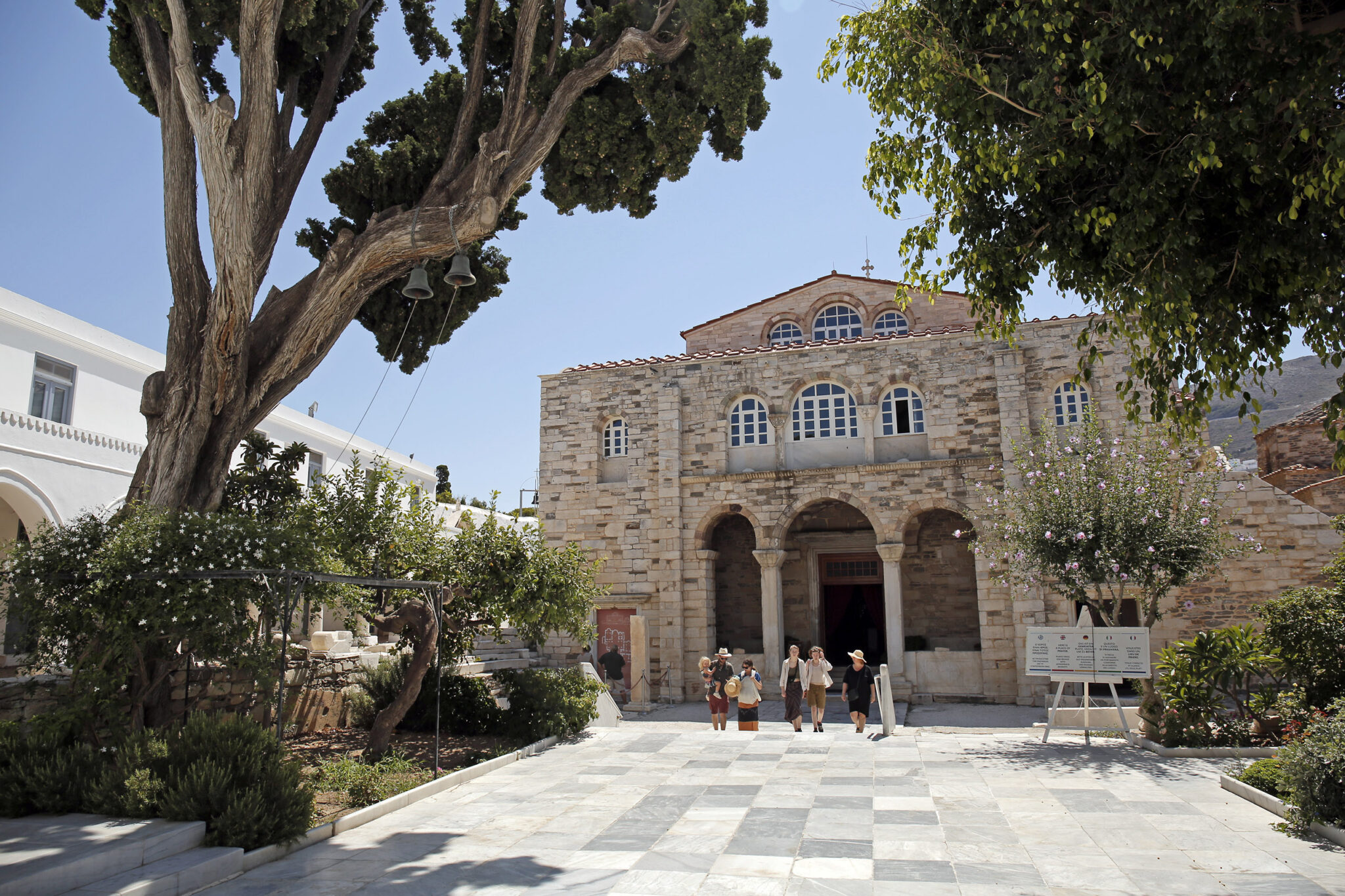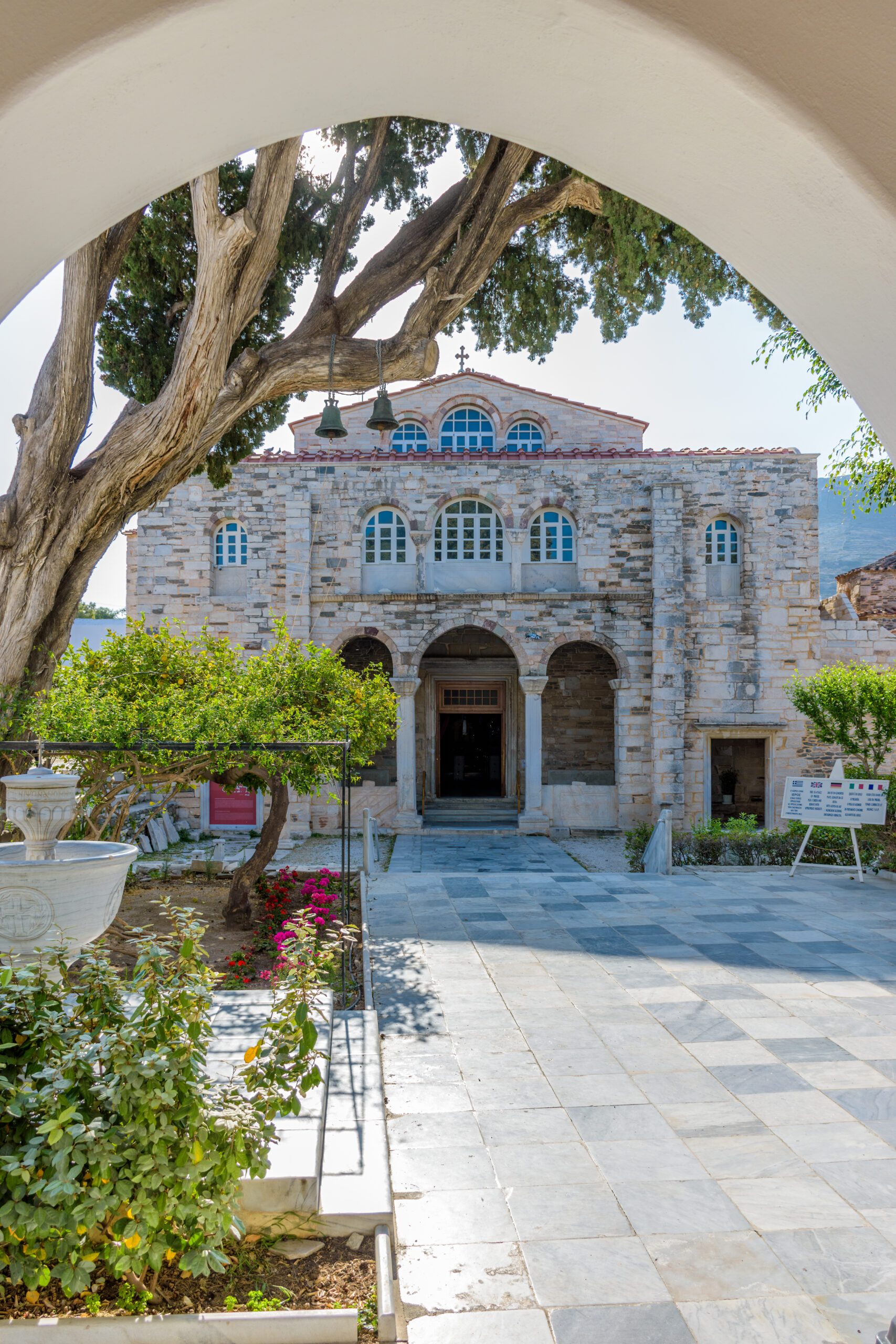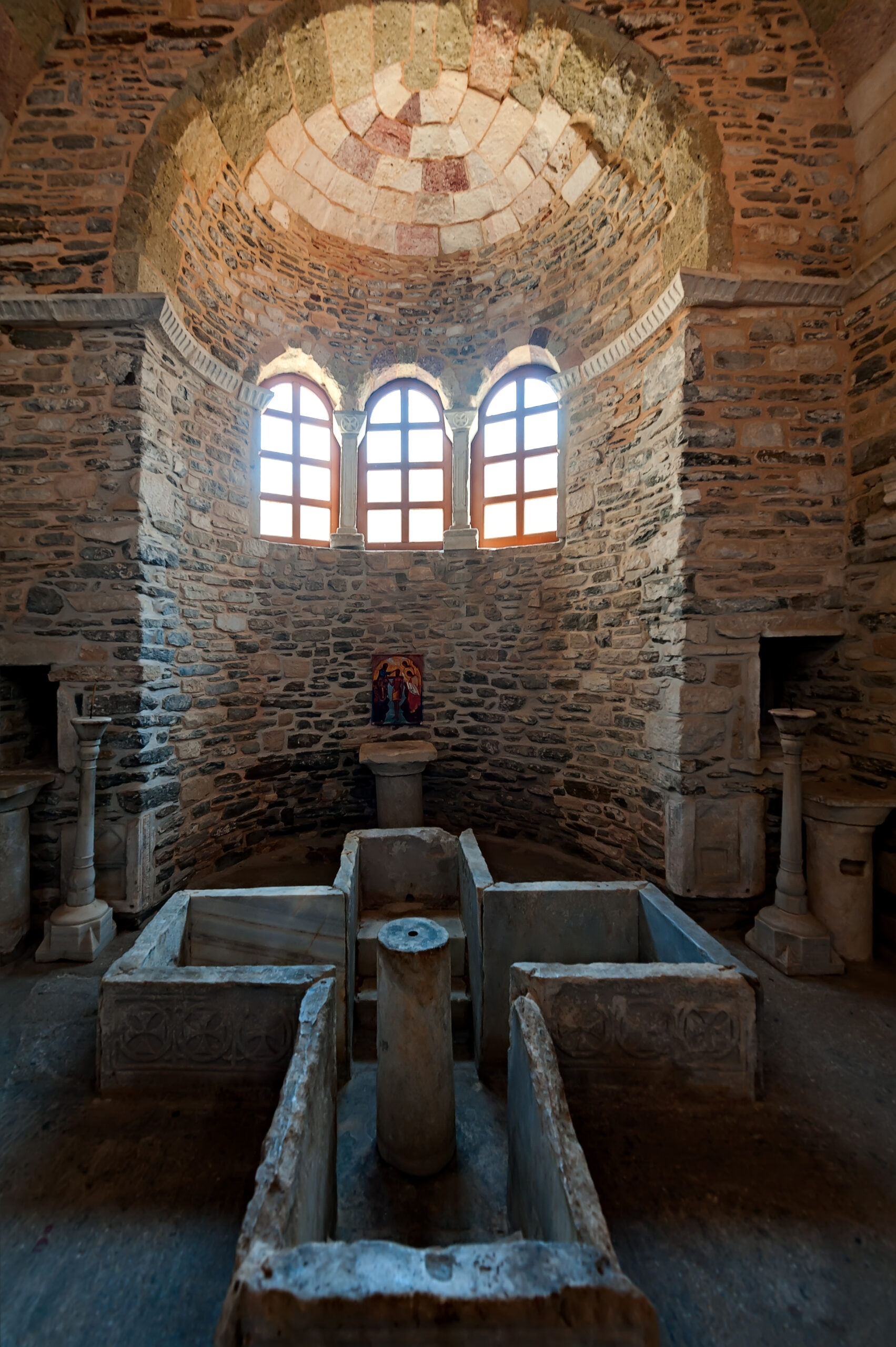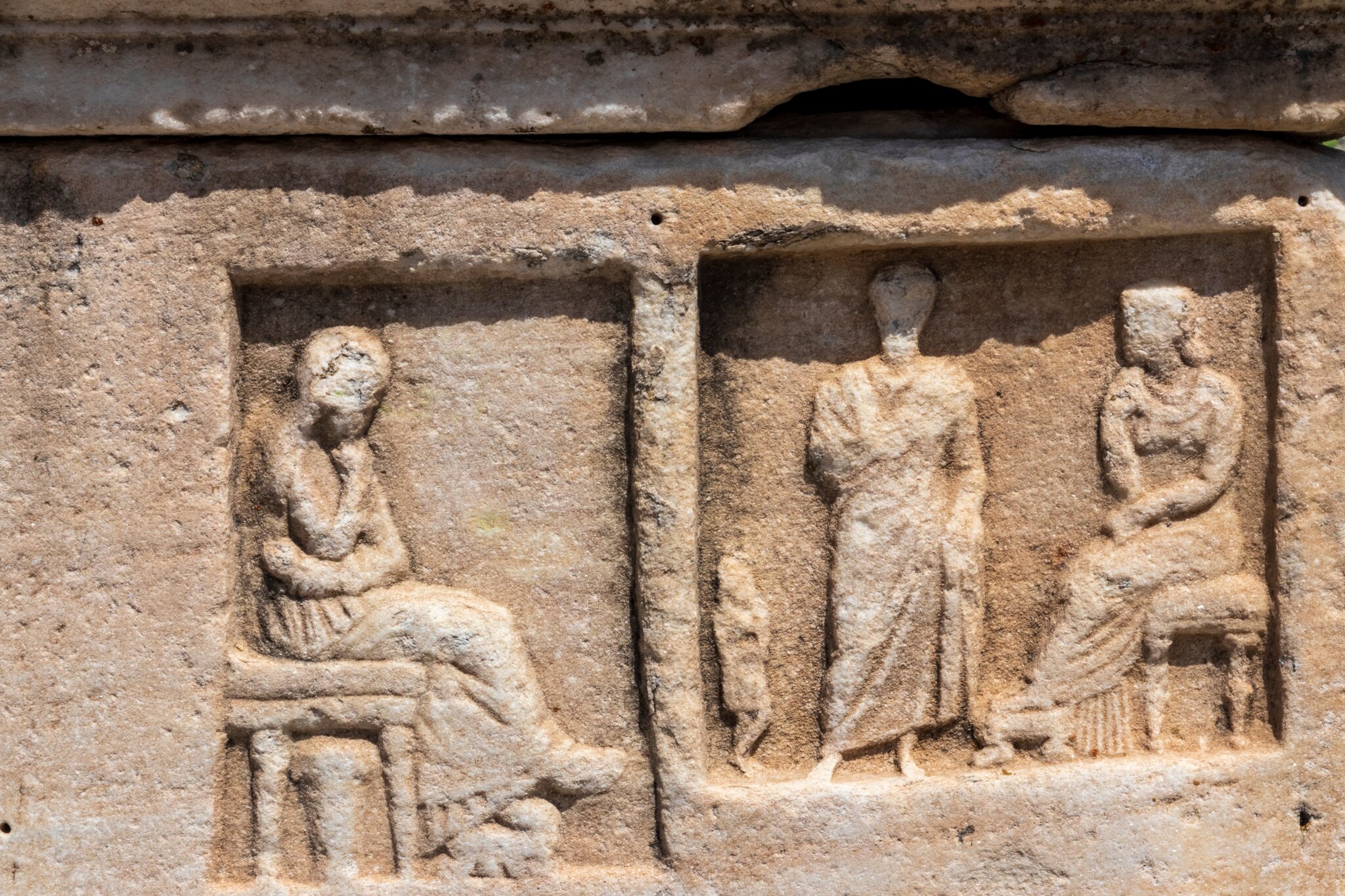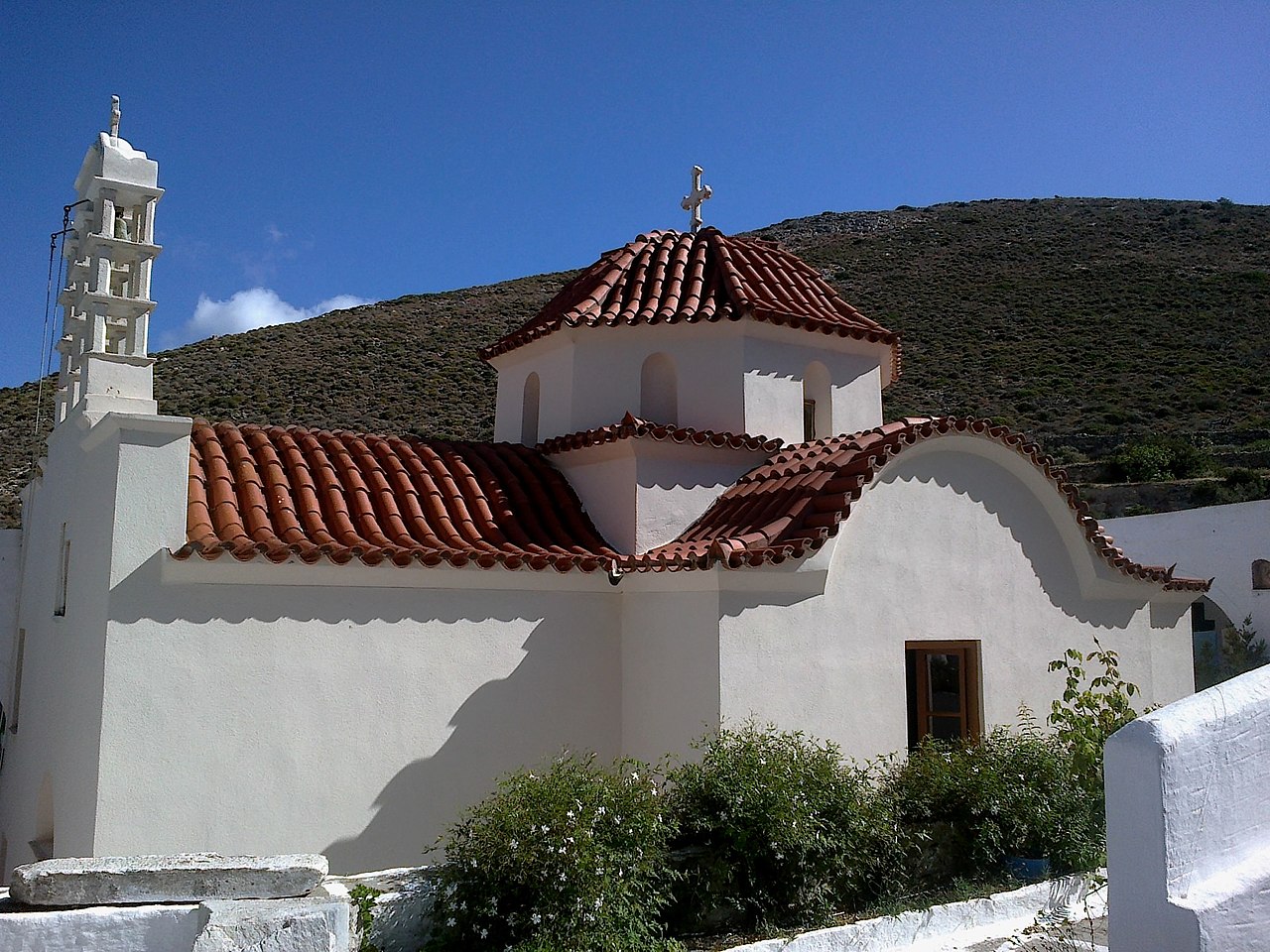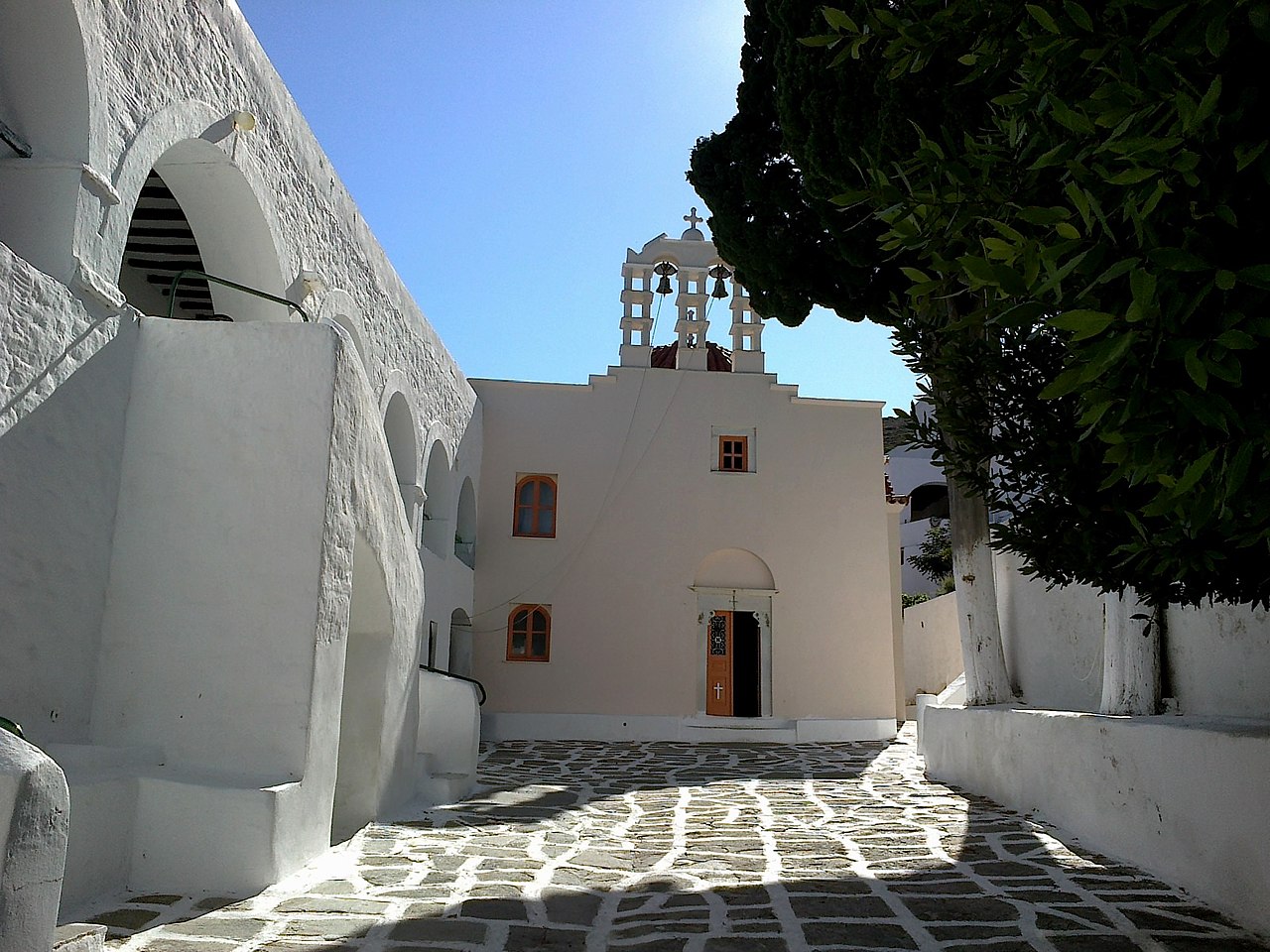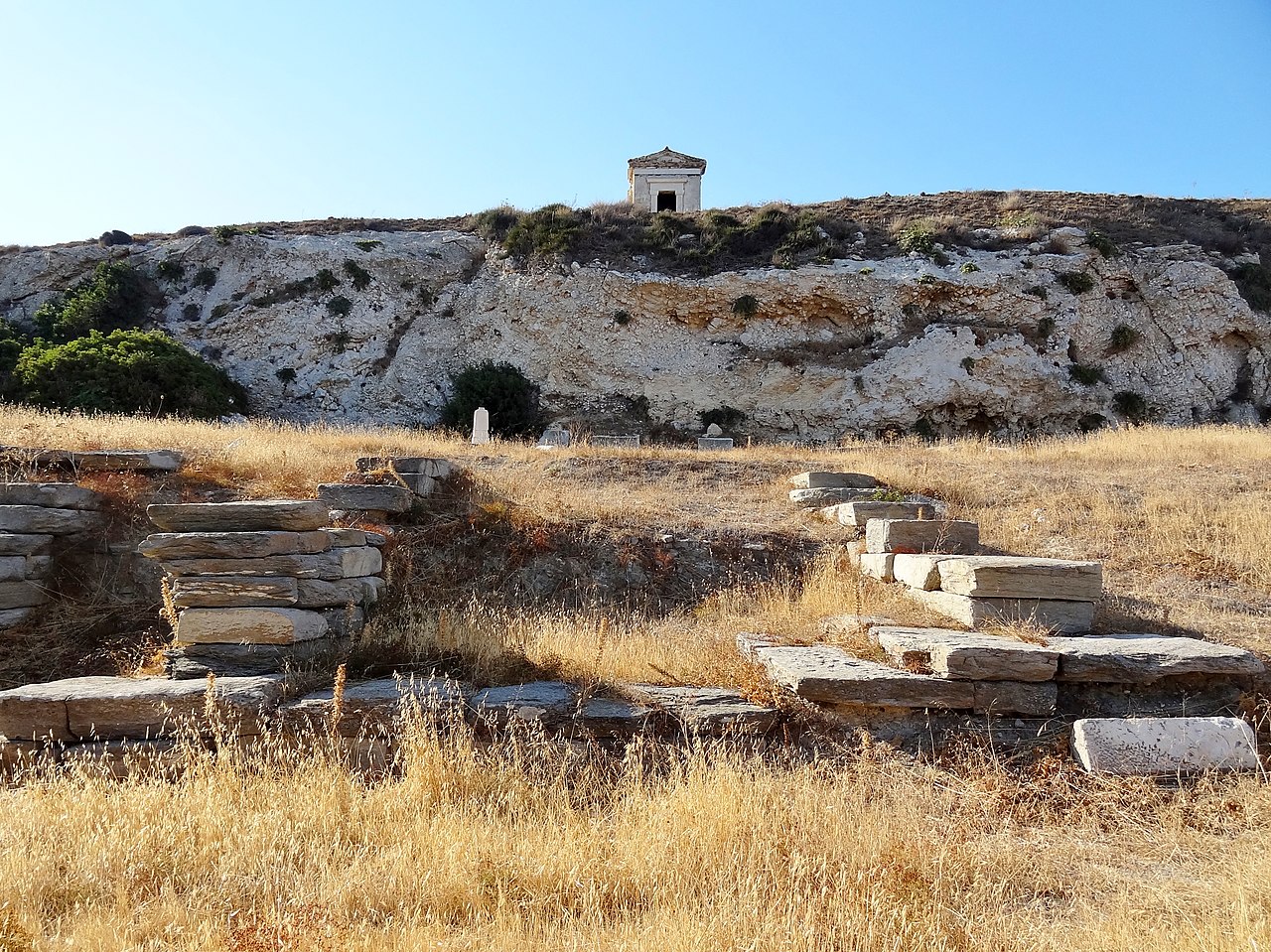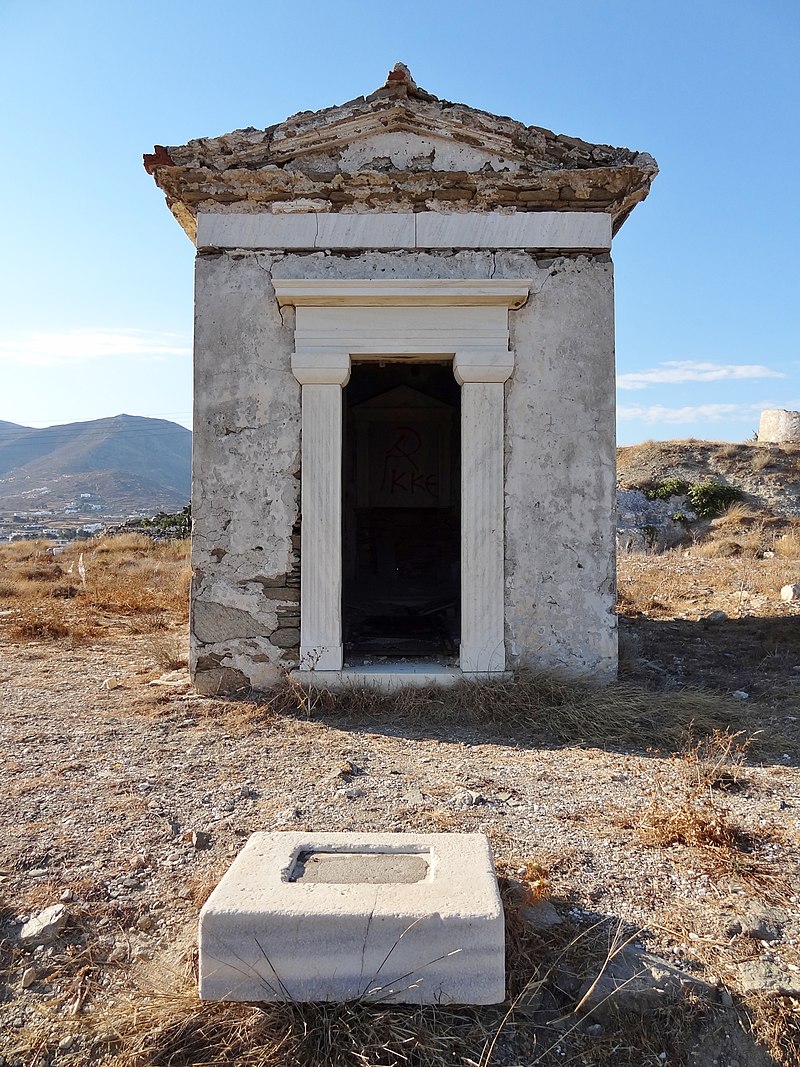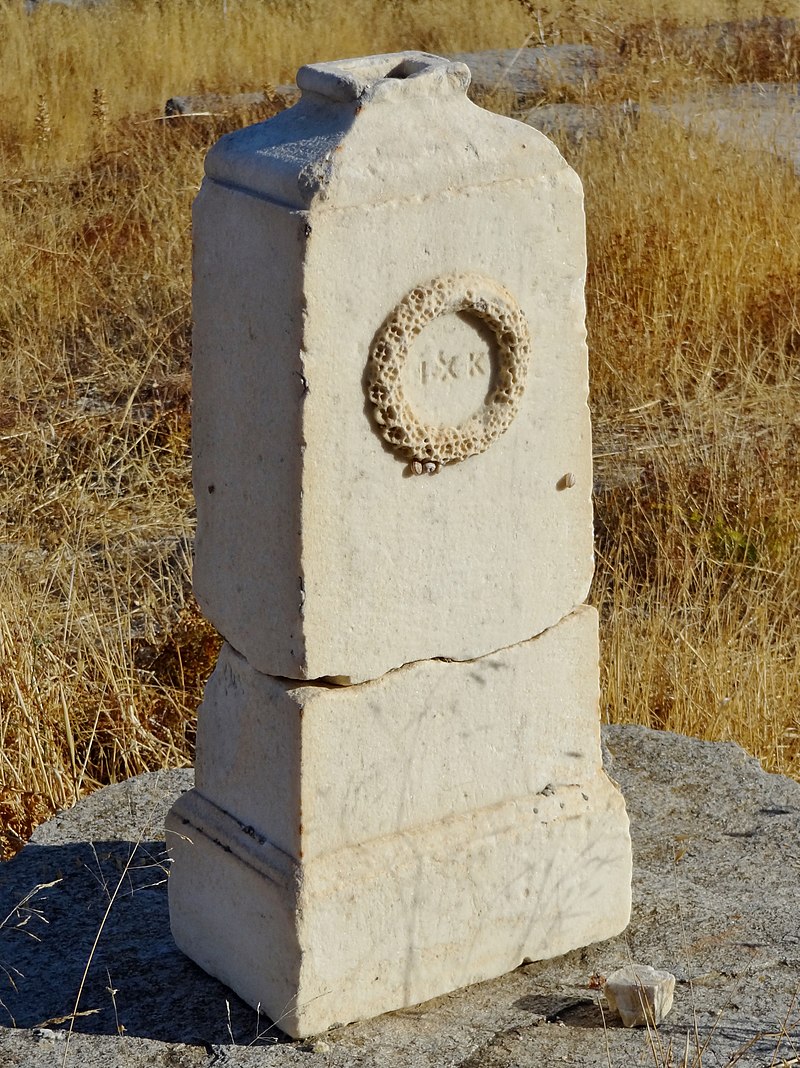Many artists have made the island their home, drawn by its light and natural beauty, and Paros has a vibrant art scene with a number of galleries and public spaces used for exhibitions. Paros Park hosts a summer programme of events with concerts in the amphitheatre and films under the stars at Cine Enastron.
In summer, a week never seems to pass without some celebration or feast day. The Pirate Festival marks the anniversary of a raid on Naoussa by Barbarossa in 1537. The 23rd of August fiesta involves the young men of the island trying to capture the womenfolk and it is a raucous celebration of dancing, feasting, fireworks and drinking. The feast of the Panagia on Paros is synonymous with the Ekatontapiliani church as thousands of pilgrims gather for a liturgy followed by a procession of an icon through the streets of Parikia and a nightlong celebration of traditional music and dance.
Panagia Ekatontapiliani
A historic church complex, Panagia Ekatontapiliani, the Church with a Hundred Doors, is the earliest remaining proto-Byzantine church in Greece and one of the oldest unaltered churches in the world. It is a well known pilgrimage church of the Aegean, second only to the Megalochari in Tinos.
According to tradition, Saint Helen, the mother of Constantine the Great, stopped in Paros en-route to the Holy Land in search of the True Cross. She vowed to build a church on Paros if her quest was successful, but unfortunately died before it could be completed. Her son kept her promise and built the church in 328 AD as a wooden rooved basilica. Two centuries later, the Byzantine Emperor Justinian the Great added the splendid dome.
Legend has it that 99 doors have been found in the church and the 100th will be discovered when Constantinople comes under Greek rule again. The Byzantine Museum of Paros is found within the complex with rare icons from the 17th and 18th centuries alongside other ecclesiastical items and valuable relics. A 14th century icon of the Virgin is carried in procession on her feast day, August 15th, the Dormition, while at Easter thousands of rose petals are dropped from the dome on the congregation.
Aegean Centre for the Fine Arts
A small American arts college hosts concerts, lectures, workshops and exhibitions in a lovingly restored neoclassical mansion in Parikia. For over half a century, the centre has offered courses in writing, painting, art history, and photography on Paros, the liveliest art scene in the Southern Cyclades. Aegean Centre for the Fine Arts (Tel.: 22840 23287, www.aegeancenter.com)
Archaeological Museum of Paros
Housing findings from Paros, Antiparos and Despotiko, the Archaeological Museum is split over two rooms and an atrium in Parikia. The first room contains Archaic and Classical sculptures, while the second room showcases pottery, sculptures and small finds from the Neolithic to the Roman era, and the courtyard has a Roman mosaic floor. Highlights include the Gorgon of Paros, a marble mermaid monster from the 6th century BC, the Nike of Paros, a statue of the goddess of Victory from 470 BC without a head, arms or wings, and the Fat Lady of Saliagos, the oldest known Cycladic figure. Archaeological Museum of Paros (Tel.:22840 21231, 2€, Closed Tuesday)
Folklore Museum of Marpissa
On Agios Nikolaos square in a restored stone building in Marpissa, the local women’s association have furnished a representation of a Parian home from earlier times. All the exhibits have been donated by local residents with each object having a unique history and the patina of years of tradition.
Monastery of Longovarda
Off the main Parikia – Naoussa road, the 17th century Monastery of Longovarda shines white on a hillside. Built in 1638, the monastery is in typical Cycladic fortress-style with high outer walls encircling the church. Today, the monastic community farms the local land and makes wine, honey and olive oil. Inside there are post-Byzantine icons, 17th century frescoes, and a library of rare books. The monastery is open in the mornings to modestly dressed males only.
Sanctuaries of Asklepios and Pythian Apollo
On the road to Aliki outside Agia Anna are sites dedicated to Asklepios and Pythian Apollo. Only the foundations of the temple to Apollo remain but the Sanctuary of Asklepios is in better condition. Built in the 4th century BC near to a spring which was used in the worship rites, it is a marble building with a central altar, two semi-circular platforms and two marble cisterns. Asklepios was the god of healing and the infirm would gather at the temple in search of a cure. An impressive Kouros was found nearby and is now part of the Louvre museum collection.
Read also:
Paros: Cosmopolitan Cyclades island
The most beautiful villages of Paros



